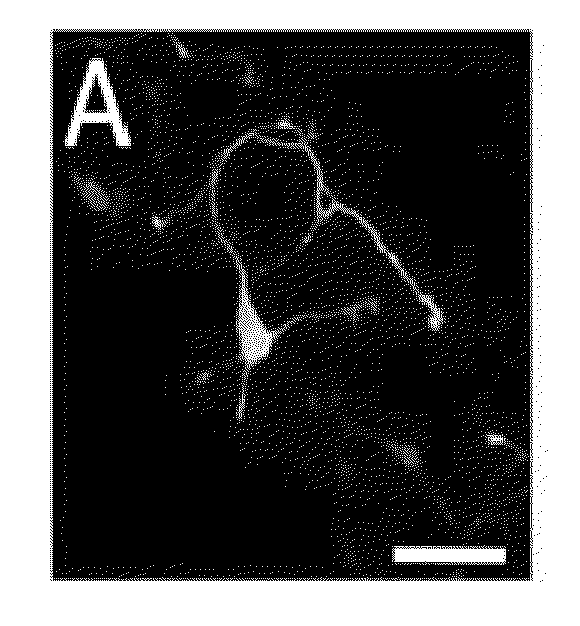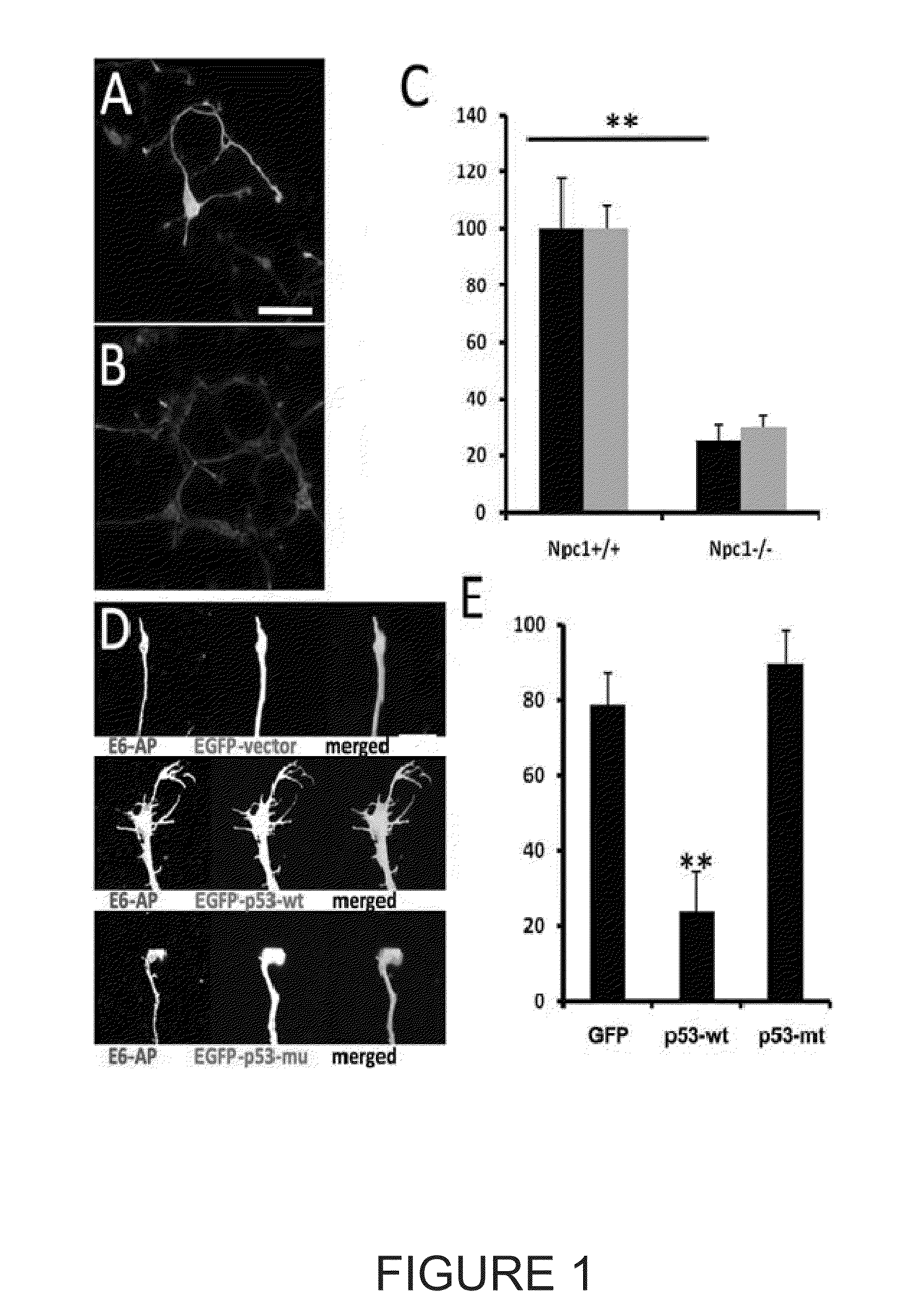Methods of treating neurodegenerative disorders and diseases
a neurodegenerative disorder and neurodegeneration technology, applied in the field of neurodegenerative disorders and diseases, can solve the problems of growth cone and mdm2-dependent p53 degradation
- Summary
- Abstract
- Description
- Claims
- Application Information
AI Technical Summary
Benefits of technology
Problems solved by technology
Method used
Image
Examples
example 1
Increased Growth Cone Collapse and Decreased Levels of Phosphorylated p53 in Hippocampal Neurons Cultured from npc1− / − Mice
[0059]Hippocampal neurons from E18 npc1− / − and npc1+ / +embryos were cultured for four days in vitro (DIV) and processed for double-immunofluorescent staining with antibodies against E6-AP (an E3 ligase), and phosphorylated p53 (p-p53). Both proteins were highly expressed in axons and growth cones, as previously reported [17]. In cultured neurons from npc1+ / +mice, high levels of p-p53 were observed mainly in cell bodies, axons and growth cones (FIG. 1A, green), whereas in those from npc1− / − mice, only low levels of p-p53 were found and mainly in cell bodies (FIG. 1B). Cultured hippocampal neurons from npc1− / − mice exhibited a much higher rate of growth cone collapse (78±2% vs 8±2%; n=100 growth cones, p, 0.01) with small growth cones and few or no filopodia, as compared to those from npc1+ / + mice. Quantitative analysis indicated that levels of p-p53 immunoreactivi...
example 2
U18666A-Induced Growth Cone Collapse was Blocked by Over-Expression of Wild-Type p53
[0060]Because axonal growth cone collapse in hippocampal neurons from npc1− / − mice was associated with decreased levels of p-p53, over-expression of wild-type p53 was tested to determine if it could reverse growth cone collapse. In this set of experiments, the amphiphilic amine and cholesterol transport inhibitor, U18666A, was used to induce a NPC-like phenotype in hippocampal neurons cultured from wild-type mice. U18666A has been used to induce NPC-like phenotype in various cultured cells, including neurons [18]. Treatment with 1 μM U18666A for 18 h induced growth cone collapse in about 80% of hippocampal neurons prepared from wild-type mice and transfected with an EGFP-vector or a vector containing p53 with the R175H mutation (p53-R175H), a conformational mutation that is frequently found in tumor cells that lack p53 function (FIGS. 1D and E). The same treatment resulted in only 20% growth cone col...
example 3
P38 MAPK and Mdm2 Activation Participated in U18666A Treatment-Induced p-p53 Degradation and Growth Cone
[0061]P53 levels are tightly regulated in cells by a negative feed-back loop between p53 and Mdm2, a p53 target gene. Mdm2 activation results in p53 degradation. The roles of p38 MAPK and Mdm2 in the regulation of p53 levels and growth cone morphology were analyzed.
[0062]Immunoblot analysis indicated that treatment of wild-type cortical neurons at DIV4 with 5 μM U18666A for 2 min induced a rapid decrease in p-p53 levels (arrow in FIG. 5A) with a corresponding increase in levels of a p-p53 immunopositive band with a slightly smaller molecular weight (thereafter referred to as p-p53 breakdown product, p-p53Δ) than in control samples. Because the p-p53Δ and p-p53 bands were very close in immunoblots and the former was the predominant band, p-p53Δ levels were used as an index of p-p53 degradation. Immunoprecipitation was used to determine whether p-p53 truncation affected its associat...
PUM
| Property | Measurement | Unit |
|---|---|---|
| Fraction | aaaaa | aaaaa |
| Time | aaaaa | aaaaa |
| Angle | aaaaa | aaaaa |
Abstract
Description
Claims
Application Information
 Login to View More
Login to View More - R&D
- Intellectual Property
- Life Sciences
- Materials
- Tech Scout
- Unparalleled Data Quality
- Higher Quality Content
- 60% Fewer Hallucinations
Browse by: Latest US Patents, China's latest patents, Technical Efficacy Thesaurus, Application Domain, Technology Topic, Popular Technical Reports.
© 2025 PatSnap. All rights reserved.Legal|Privacy policy|Modern Slavery Act Transparency Statement|Sitemap|About US| Contact US: help@patsnap.com



